Manzanas, R., Gutiérrez, J.M., Bhend, J. et al. Clim Dyn (2019) 53: 1287.
AbstractThis work presents a comprehensive intercomparison of different alternatives for the calibration of seasonal forecasts, ranging from simple bias adjustment (BA)—e.g. quantile mapping—to more sophisticated ensemble recalibration (RC) methods—e.g. non-homogeneous Gaussian regression, which build on the temporal correspondence between the climate model and the corresponding observations to generate reliable predictions. To be as critical as possible, we validate the raw model and the calibrated forecasts in terms of a number of metrics which take into account different aspects of forecast quality (association, accuracy, discrimination and reliability). We focus on one-month lead forecasts of precipitation and temperature from four state-of-the-art seasonal forecasting systems, three of them included in the Copernicus Climate Change Service dataset (ECMWF-SEAS5, UK Met Office-GloSea5 and Météo France-System5) for boreal winter and summer over two illustrative regions with different skill characteristics (Europe and Southeast Asia). Our results indicate that both BA and RC methods effectively correct the large raw model biases, which is of paramount importance for users, particularly when directly using the climate model outputs to run impact models, or when computing climate indices depending on absolute values/thresholds. However, except for particular regions and/or seasons (typically with high skill), there is only marginal added value—with respect to the raw model outputs—beyond this bias removal. For those cases, RC methods can outperform BA ones, mostly due to an improvement in reliability. Finally, we also show that whereas an increase in the number of members only modestly affects the results obtained from calibration, longer hindcast periods lead to improved forecast quality, particularly for RC methods.



 Funded by the European Union under Horizon 2020.
Funded by the European Union under Horizon 2020.